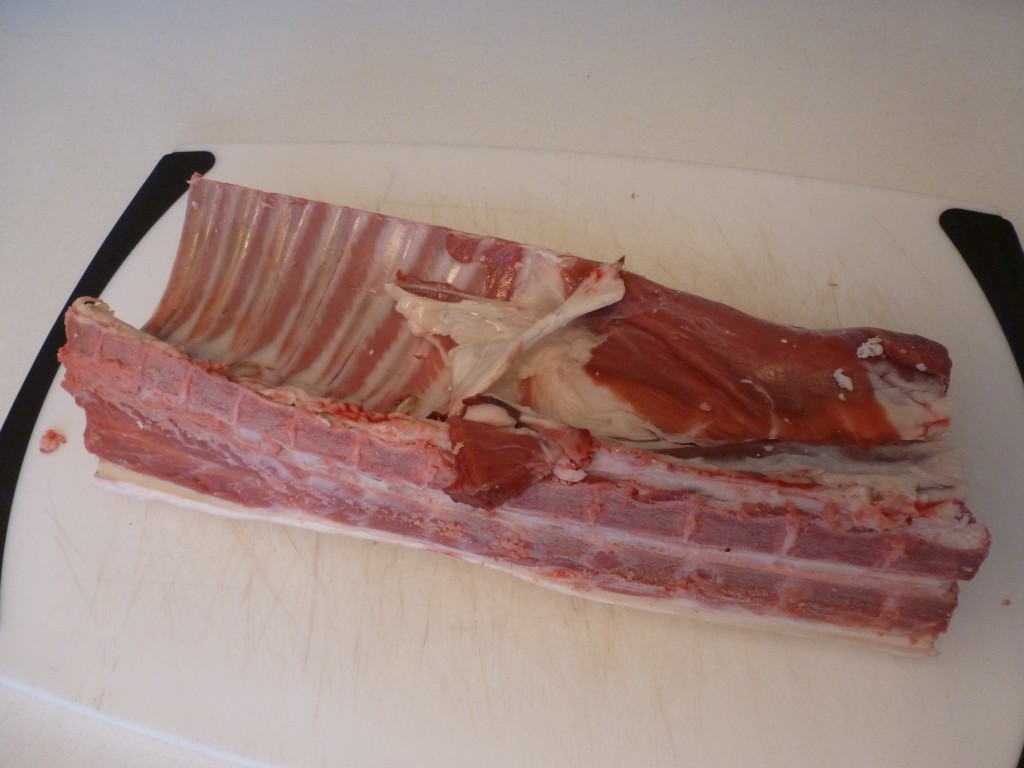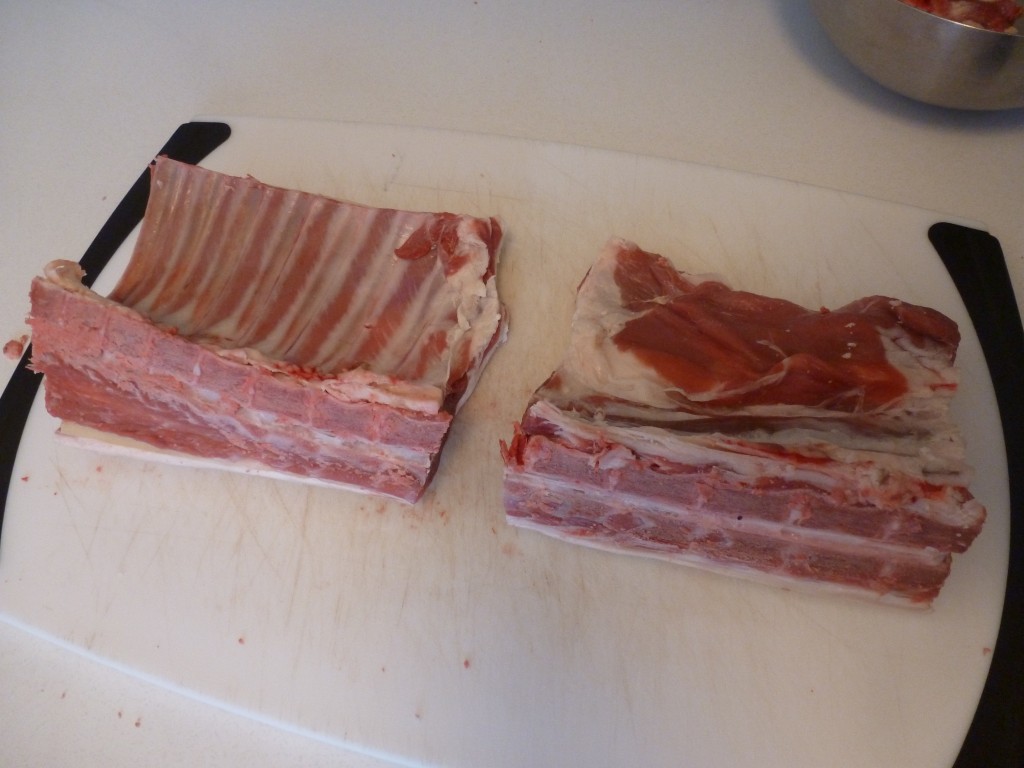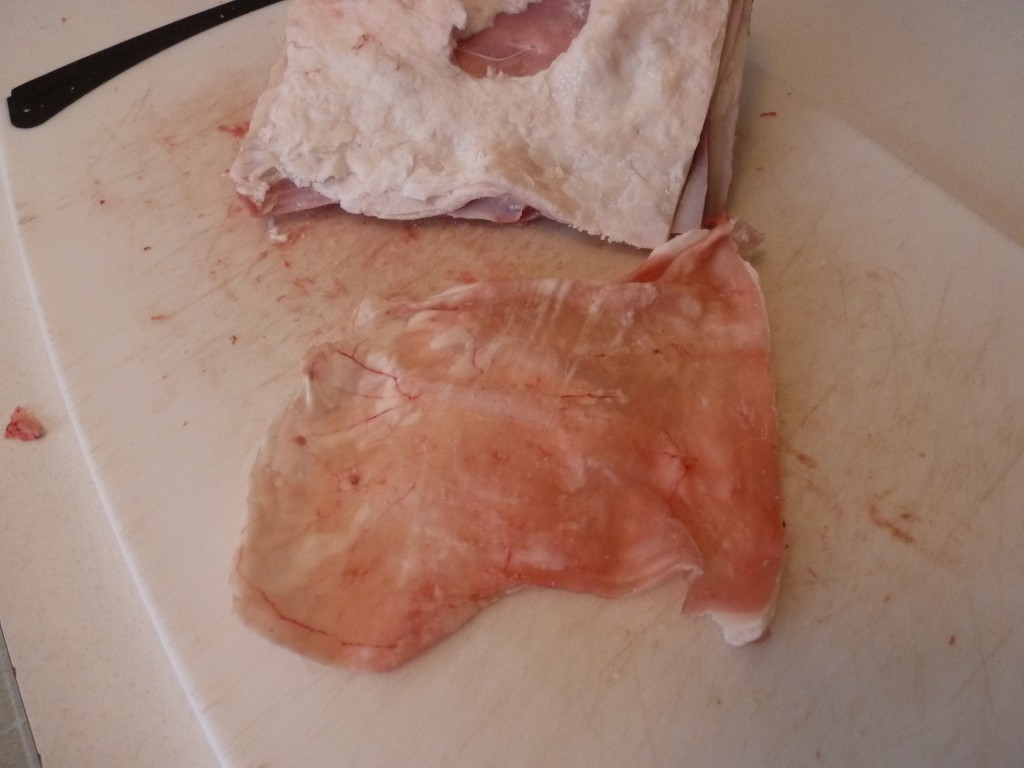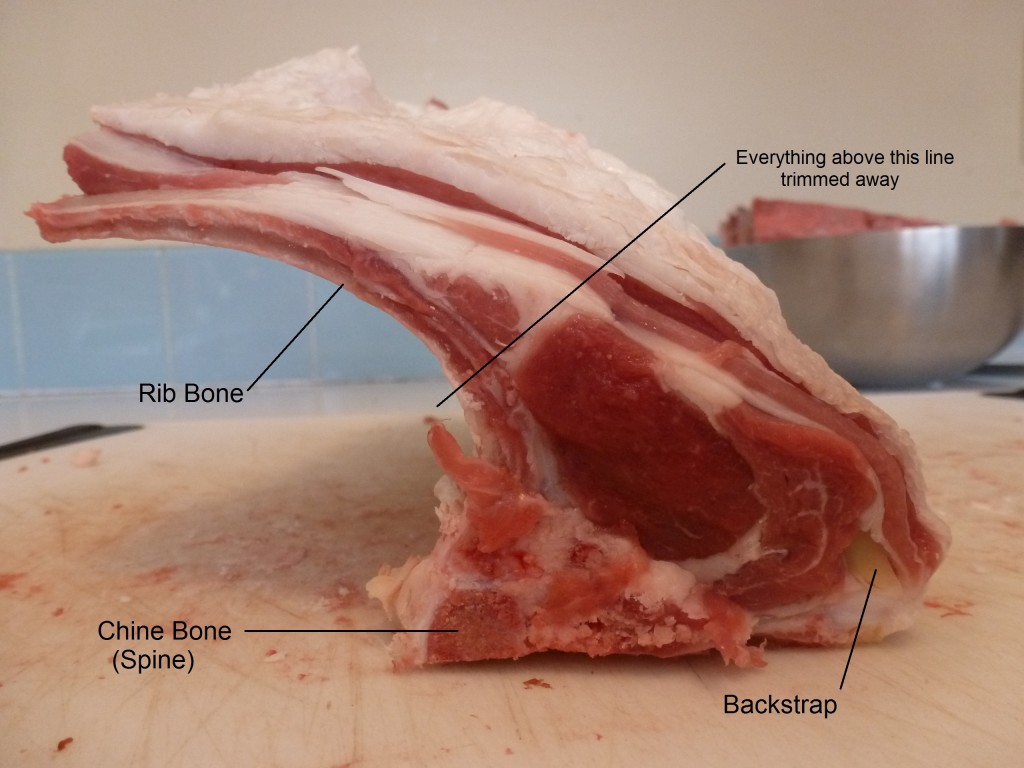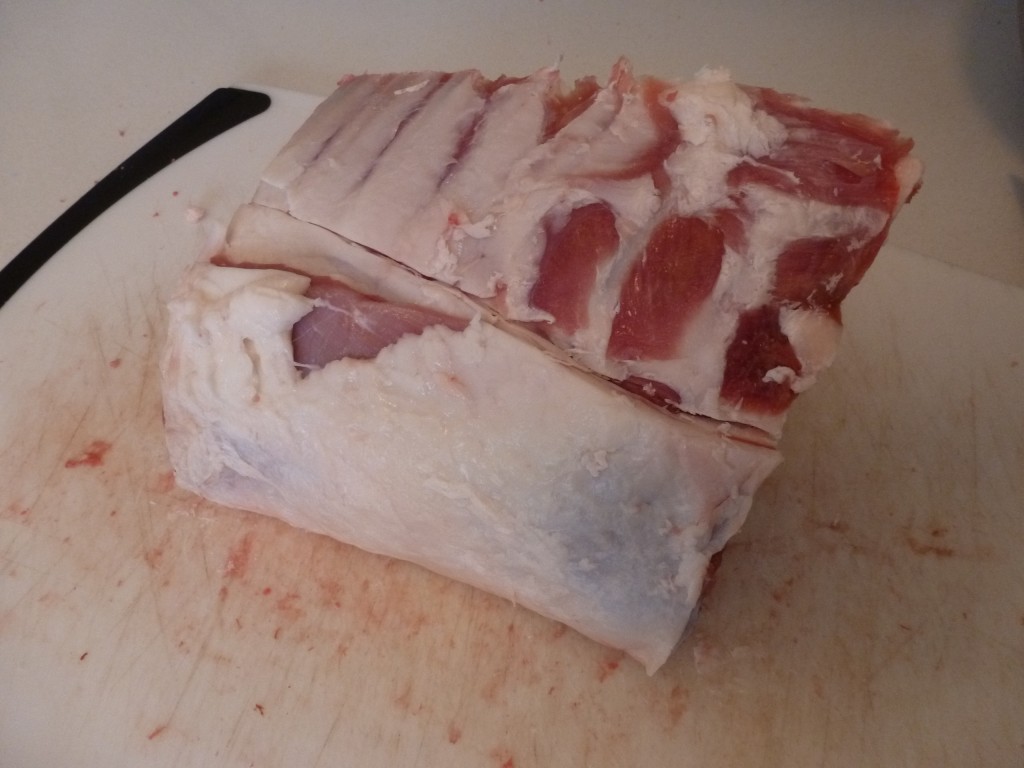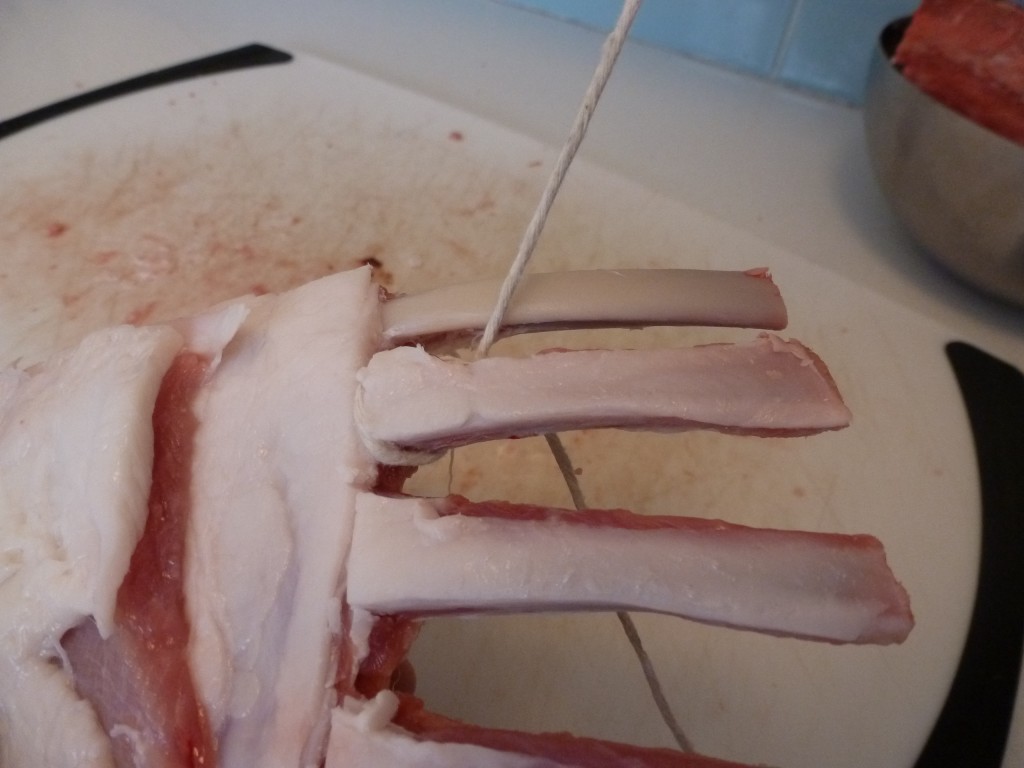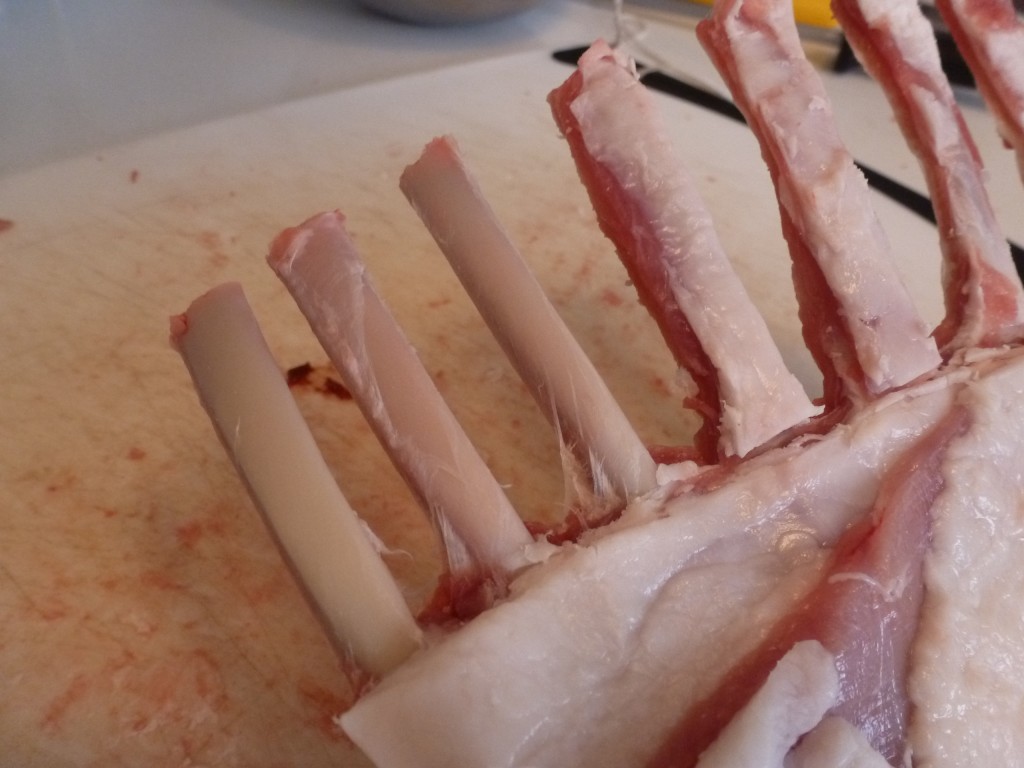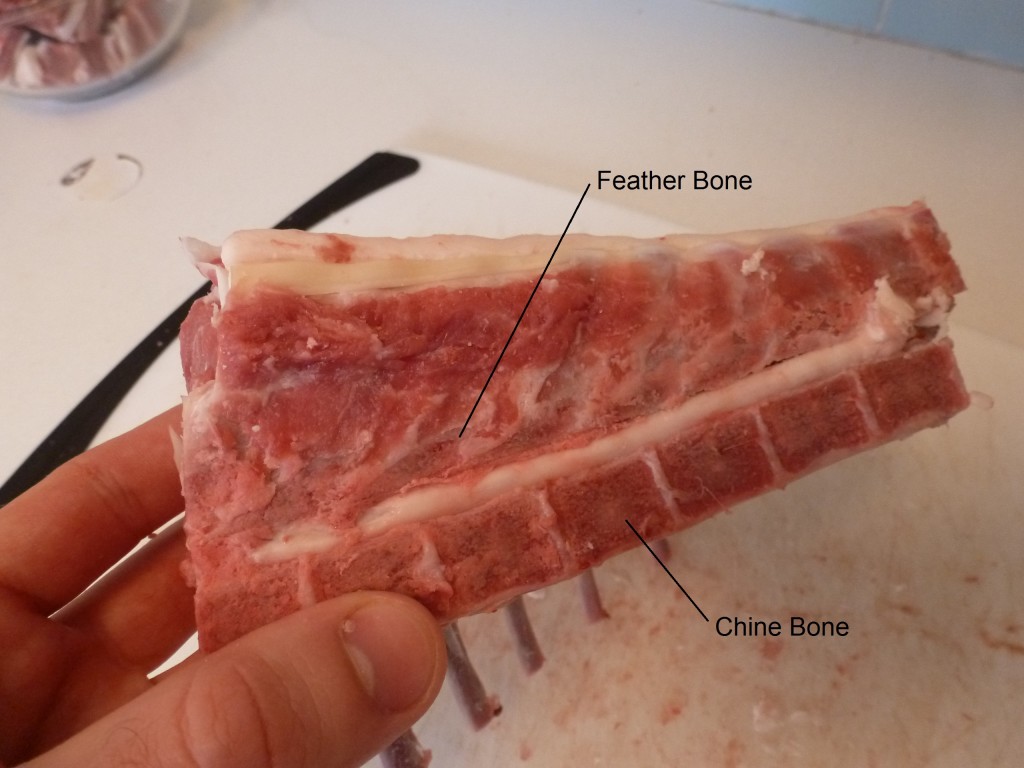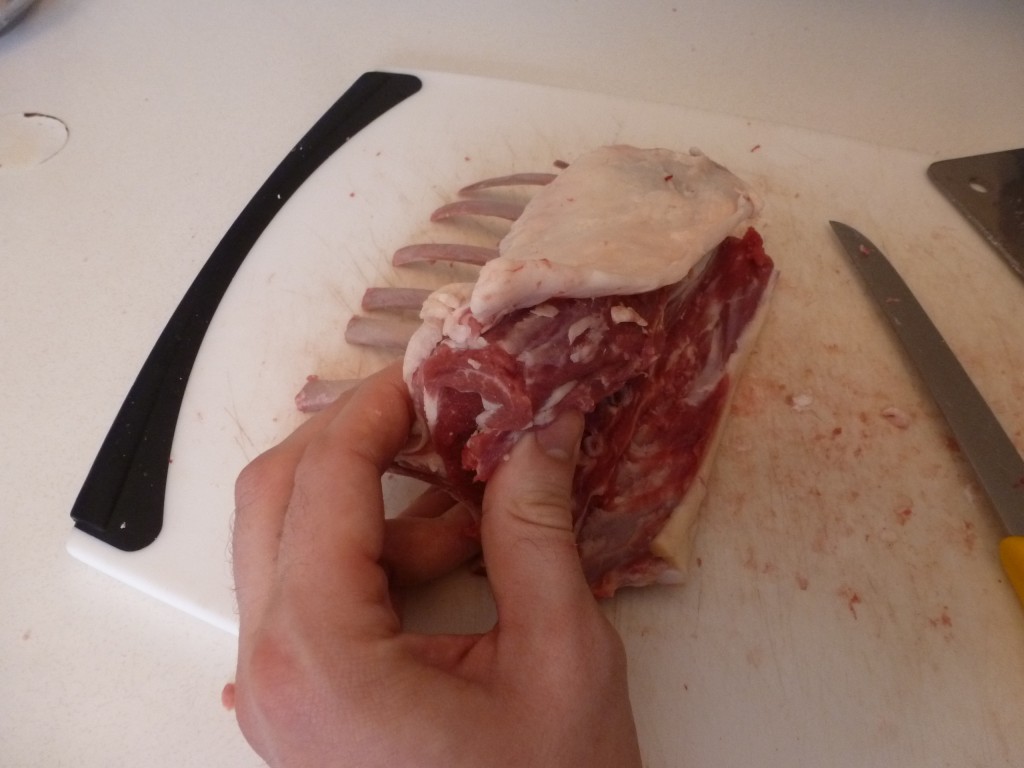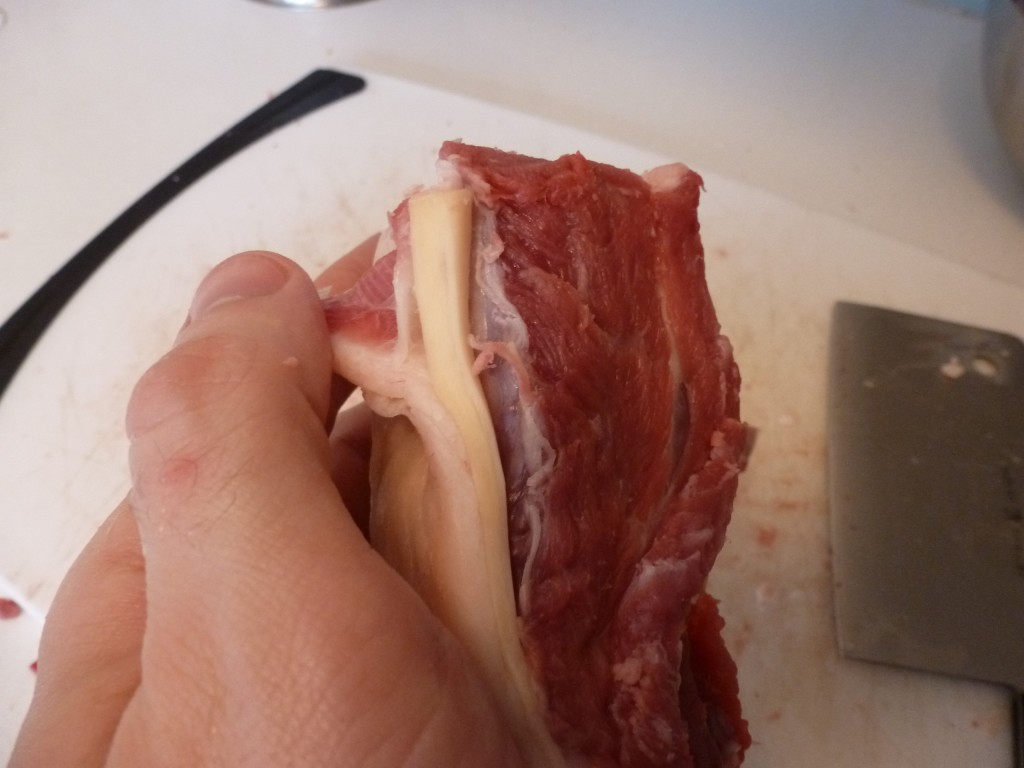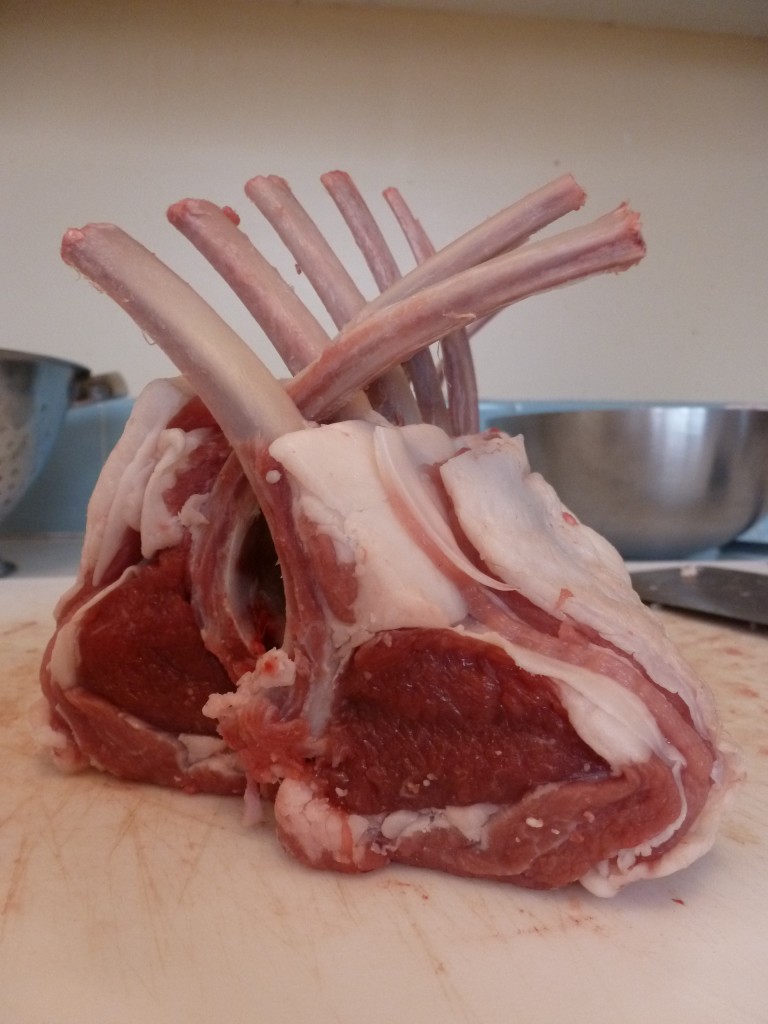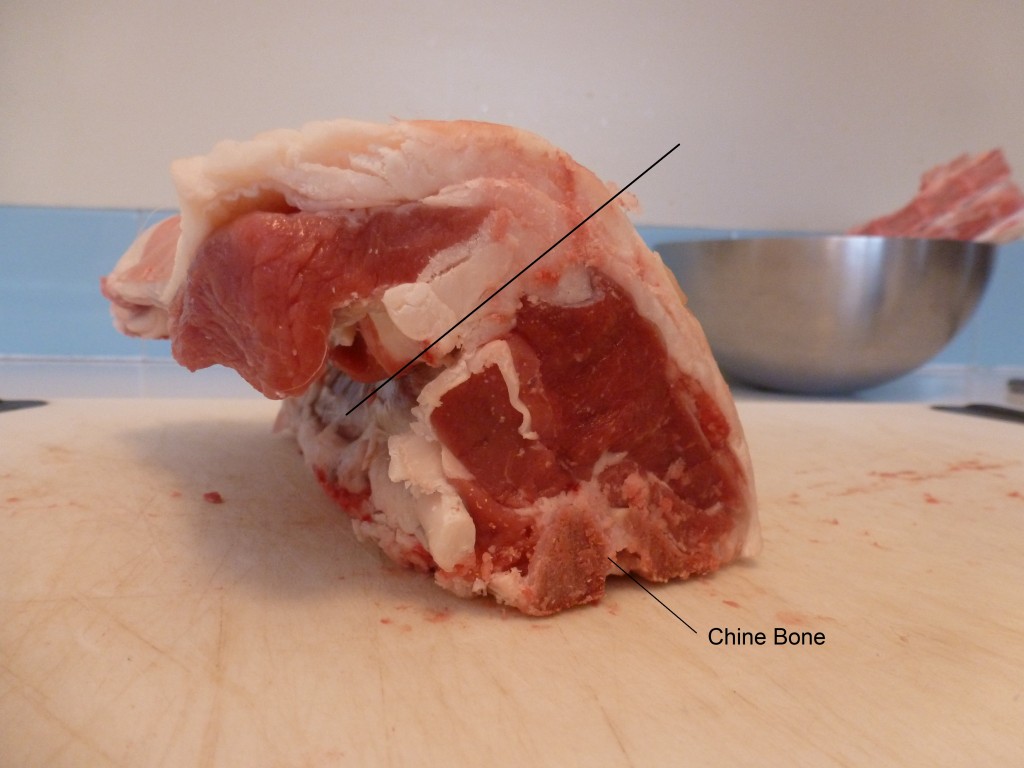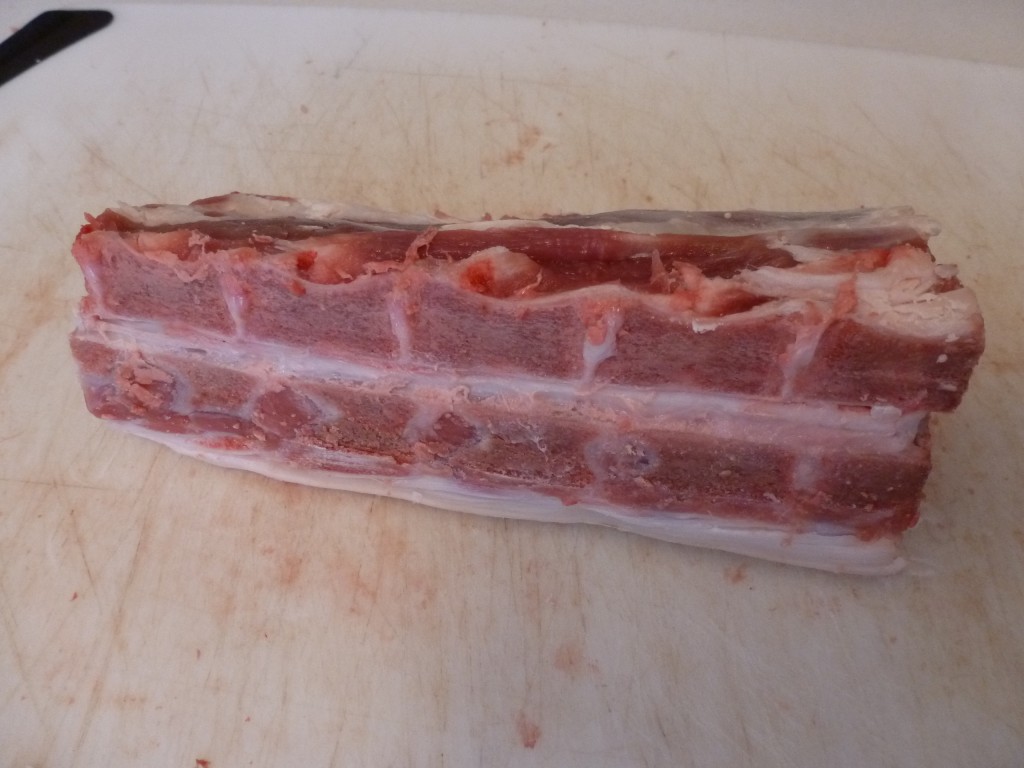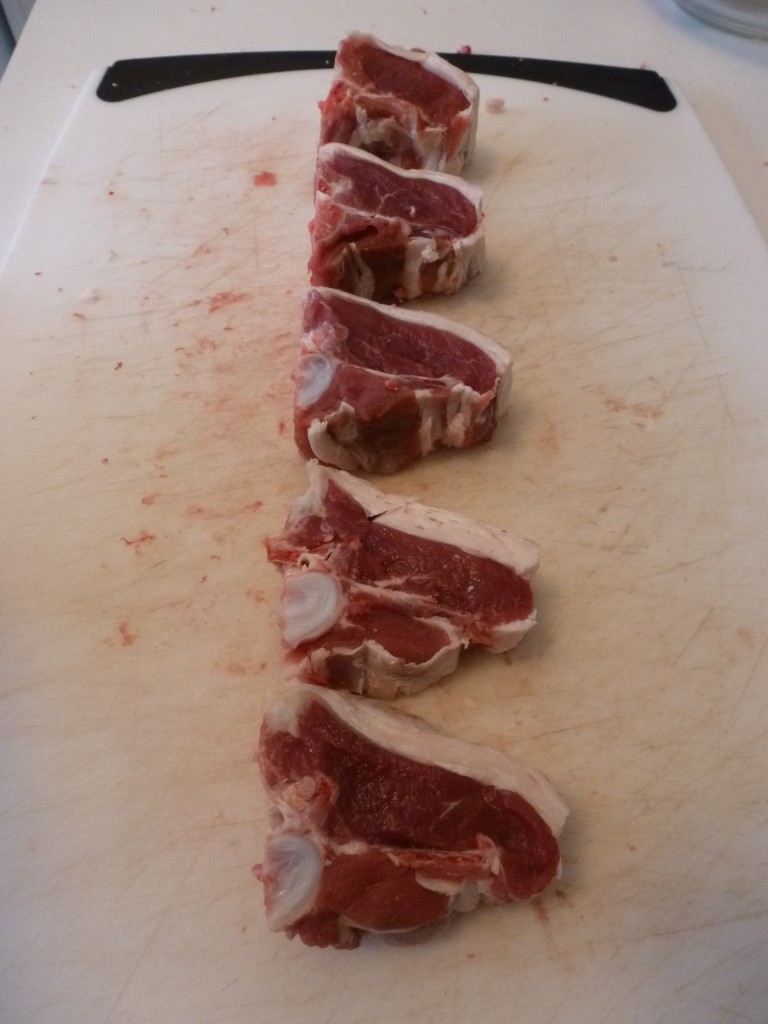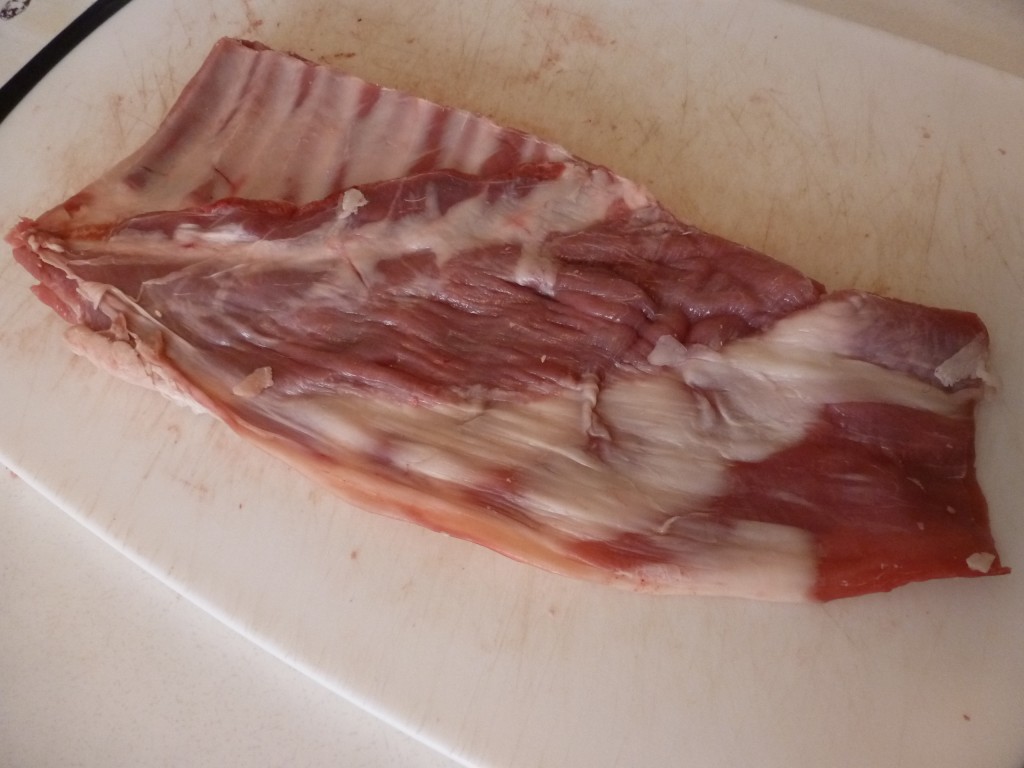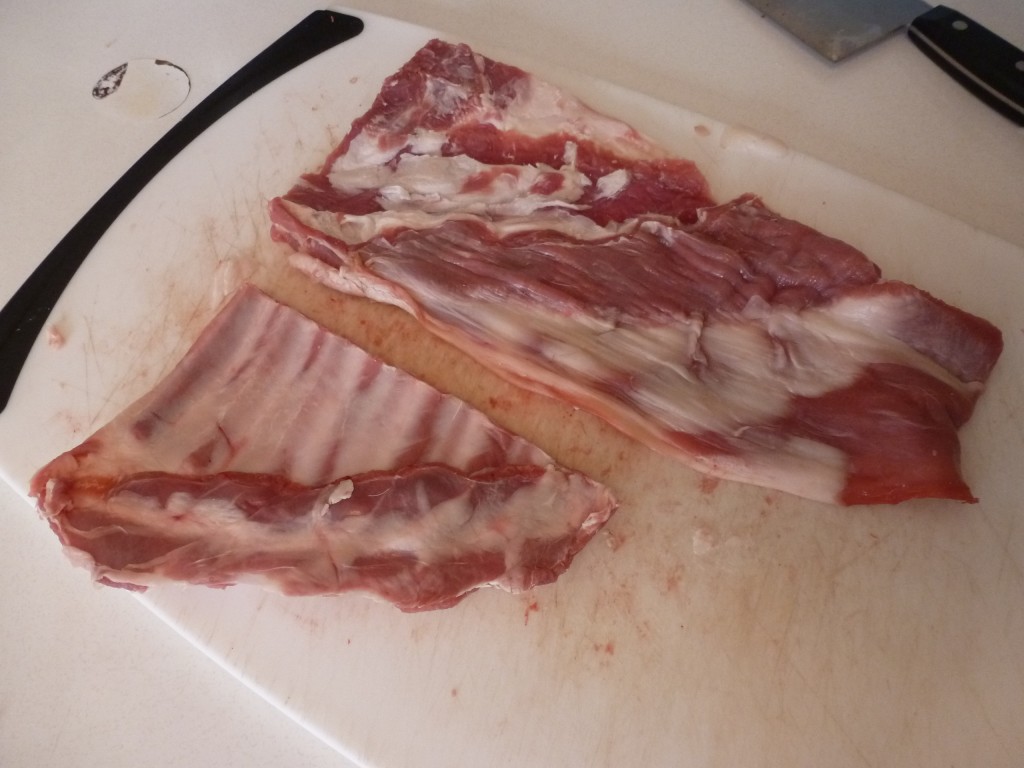The loin primal is divided into two sections. The forward part, from the thoracic section of the spine, contains ribs, and is usually trimmed to make rack of lamb. The back part, from the lumbar section, contains no ribs, and is usually broken into lamb chops.
Dividing the Loin Primal into the Rib and Loin Subprimals
This is the whole loin primal, with the fell still attached.
Here is the underside of the loin primal. You can see the rib section on the left, and the loin subprimal on the right.
We divide the two by cutting after the last rib bone, then cleaving through the backbone.
How to make a Frenched Rack of Lamb
Frenched lamb rack is simply a lamb rack with the long rib bones exhaustively cleaned. This an extremely popular cut in fine restaurants because of the showy presentation.
First, if it’s still attached, remove the fell from the rack.
Next we remove the layer of meat and fat that is covering the rib bones. We landmark this cut by looking at the cross-section of the rack and locating the central, round group of muscles.
We cut away all the meat and fat from the rib bones above the central round muscles.
Now cut away all the meat and fat from between the ribs bones.
To get the ribs super-clean, we use butcher’s twine. Tie a three foot length of twine to something very solid and sturdy, either a heavy table or cabinetry. Wrap the twine around the base of one of the bones, pull it tight, then slide it over the bone and off the end. It will pull meat and fat and connective tissue with it and leave the bone cleaner than it ever would get by scraping with a knife. Repeat for all the bones.
Below you can see how effectively the twine cleans the bones.
Now we have to remove the chine, or backbone. I find this the hardest part. For a proper French lamb rack, we have to remove the backbone without removing the attached ribs that we just cleaned so diligently. Despite what you’ve heard, this can be done without a saw.
Making small, exploratory cuts with your knife, follow the feather bones down to the chine as closely as you can, exposing the ridge where the ribs meet the chine.
Now the idea is to pop the ends of the ribs out of the chine. I use a cleaver, but I am not cleaving through any bones; I’m simply whacking the meeting point so that the ribs are dislodged from the backbone. Once you’ve broken through the rib-chine adhesion, you should be able to separate the two with your boning knife. I’ve you’ve broken through some of the ribs so that you have fractured ends, that’s fine.
Here’s the lamb rack with the chine bone removed:
Along the bottom of the meat-end of the rack there might be something that looks like a thick, yellowish rubberband. On a beef this is called the backstrap. There is probably a lamb-specific term for it, but I’m not sure. This absolutely has to be removed, as it is primarily elastin, a connective tissue that doesn’t break down, no matter how much heat, moisture, and acid it is exposed to. You may have inadvertently removed it when cutting out the chine bone.
Remove the rib membrane. The ribs should still be attached to the meat along at least an inch of their length. There is a membrane covering this section that can be removed. This is just like removing the rib membrane on pork back ribs.
Finally all we need to do is trim back the fat cap. This may or may not be necessary, depending on the lamb. Ideally there will be a fat cap covering the entire section, no more than 1/8″ thick.
Here are the final French lamb racks:
Breaking the Loin Subprimal into Lamb Chops
The loin subprimal, the lumbar region of the backbone, is usually cut into lamb chops. Lamb chops are analogous to the T-bone steaks on a side of beef. In the picture at left, the round, white bone at the bottom of the chop is the chine bone, or backbone. Extending up from this is a finger bone. To the right of the finger bone is the lamb’s tenderloin, roughly one inch in diameter. To the left is what would be the striploin on a beef.
As always when working with lamb, we start by removing the fell.
Next we want to separate the central loin muscles from the less desirable side meat. We landmark the separation by looking at the cross-section of the loin, as seen below.
Remove the side meat, reserving it for trim.
Now we want to separate the loin into chops. I cut so that each chop corresponds to one vertebra. Since the feather bones and chine bones overlap somewhat, we’ll need to use a cleaver.
You can see the individual vertebrae clearly in the picture below. I make a cut following the line between each vertebra all the way around the loin.
Then a light cleave through the feather bone, and a heavier cleave to separate the vertebrae, and we have lamb chops. You should get five or six chops from each loin.
Boning the Lamb Flank
The lamb flank is a tough, fatty, skinny flap of meat. It can be braised, but is usually ground. All that is required to process the flank is to remove the ribs.

